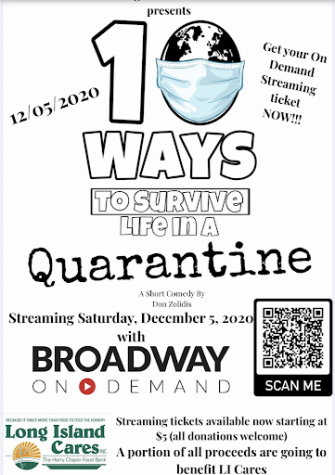8 Easy Ways For Students to Help the Environment
- Don’t drink from plastic water bottles. By drinking filtered or tap water instead of water from disposable bottles, plastic waste would decrease by exponential amounts. Decreasing such waste is crucial to the preservation of ecosystems because of the damage each piece of plastic can have on the plants and animals living in a particular area. According to National Geographic, “over 100 million marine animals are killed each year due to plastic debris in the ocean. Currently, there are an estimated 100 million tons of plastic in oceans around the world.” Therefore, invest in a reusable water bottle!
- Take shorter showers. According to a study done at Boston University, the average shower uses about five gallons of water per minute. Every second saved matters! By doing simple things like turning off the water when brushing your teeth or while washing your hair, over time, the amount of water each person can save is monumental.
- Turn your lights off. As simple as it may seem, turning off the lights is something that can save a lot of energy for every minute they are off. There are many times throughout the day that a classroom, work, or house light can be turned off. Natural sunlight from illuminated windows not only is a good substitution for energy-burning artificial light,especially in the upcoming summer months, but is proven to have many benefits on one’s mood and mental health. For example, according to Healthy Living Magazine, “natural light increases student and worker productivity and energy.”
- Use tupperware and glass reusable containers instead of plastic bags and other disposable means of food storage. Not only will this help decrease the amount of discarded plastic, but sealed containers also preserve food freshness for longer. Like stated earlier, the amount of plastic waste in our world is escalating, therefore, every bit of prevented plastic waste counts.
- Carpool. This is an easy way for students to contribute to environment conservation. Driving with a neighbor to school, picking up a younger teammate for practice instead of a parent driving them or hopping in the car to a hangout are all ways young people can carpool. Also, taking the bus to and from school instead of being picked up (the bus passes your stop everyday whether you’re on it or not).
- Helping save the environment can be as simple as picking up a piece of garbage you drop or that you pass on the beach or at the park. It’s understood that there is a certain “ick factor” behind picking up garbage someone else left behind, but it can truly help. One water bottle or empty chip bag can be deadly for animals, and these items can easily be blown into water or other animal habitats.
- Eat local and organic foods. In addition to helping support Long Island’s local economy, buying produce from neighboring farms decreases the length of the trip from the field to your table, which reduces transportation pollution. In regard to organic food, the absence of synthetic chemicals used in other foods makes a large, positive impact on the environment— and not to mention one’s physical health— by not contaminating the soil or water used in the growing process.
- Bring vinyl or cloth bags for your groceries at the supermarket. Considering the new five-cent charge for plastic bags in Suffolk County, using cloth, reusable bags is financially and environmentally friendly. If it’s necessary to use plastic bags provided by the store, use the least number possible and bag multiple items together.


